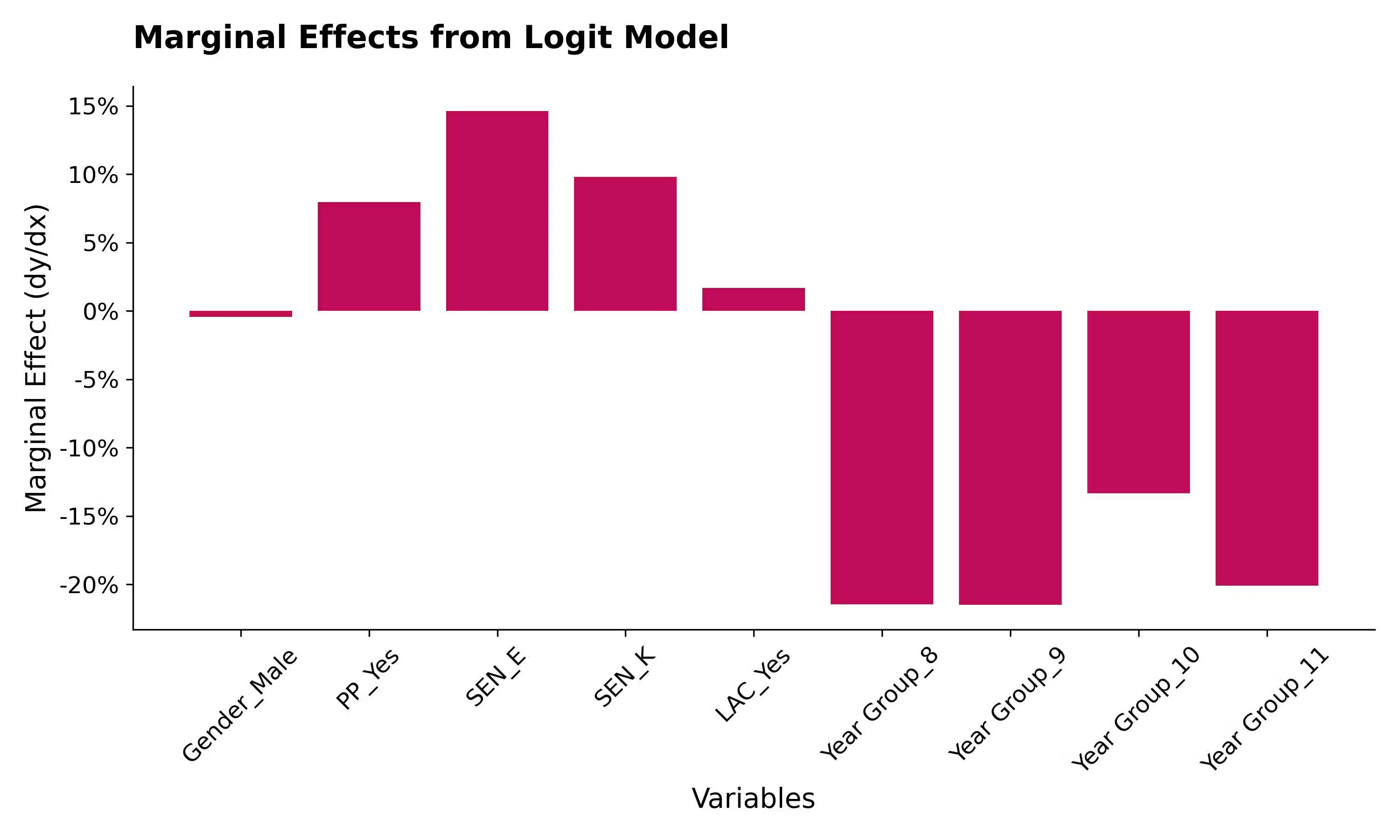
Unlocking Student Attendance Insights with Predictive Analysis

- We found that PP and SEN status are linked to higher likelihood of multi-day absences, and built a custom model to highlight individual students who are at risk of being absent for longer than the average student.
- Analysis reveals that PP and SEN status are linked to a higher likelihood of multi-day absences, while advancement through year groups tends to decrease absence rates.

At RODA Technology, we harness the power of data, econometrics, and statistics to enhance educational services. A critical challenge in this sector is managing student attendance. This post explores into how we utilised predictive analysis to address this issue, focusing on a specific case study.
The Importance of Attendance in Education: Regular attendance is essential for academic success and social development. Absenteeism not only affects the individual student but also impacts the learning environment and the institution's performance. Understanding and addressing the causes of absenteeism is thus crucial.
Overview of Predictive Analysis: Predictive analysis uses past data to forecast future trends. In education, this technique can reveal patterns in student behaviour, allowing schools to intervene effectively and preemptively.
Case Study
In our study, we considered a range of factors, including Pupil Premium (PP) eligibility, Special Educational Needs (SEN) status, and the year group of each student. Using a statistical model called the logit model, we analysed how these factors correlate with the likelihood of students having multi-day absences.
Results and Analysis
Our analysis yielded significant insights:
- Pupil Premium (PP) and SEN Status Students with PP eligibility or identified as having SEN were more likely to have multi-day absences. This finding underscores the need for targeted support for these groups.
- Year Group Progression Interestingly, we found that as students progressed through their year groups, the likelihood of them having multi-day absences decreased. This trend suggests that older students may have better attendance habits or that schools are more effective in addressing attendance issues in higher year groups.
The chart shows the marginal effect of each factor based on a counterfactual student absence. Each factor indicates the average change in the likelihood that a student in the given category is likely to have a multi-day absence.
Real-World Applications and Benefits: These insights are invaluable for schools in allocating resources and designing interventions. For instance, additional support could be directed toward younger students or those with PP or SEN status to reduce absenteeism. We can also build custom models based on more detailed data to pinpoint students who are at high risk of long term absence, to help prioritise intervention.
Measuring Intervention
The next step in this analysis will be to record various intervention techniques, to quantify the effect that each one has on these absence outcomes, allowing institutions to focus on the actions that have the most beneficial effect.
How can we help?
Predictive analysis offers valuable insights into student behaviour and needs. At RODA Technology, we are dedicated to leveraging these insights to improve educational environments. If you're interested in exploring data-driven solutions for your institution, please contact us.
Let's work together to create a more effective education system.




